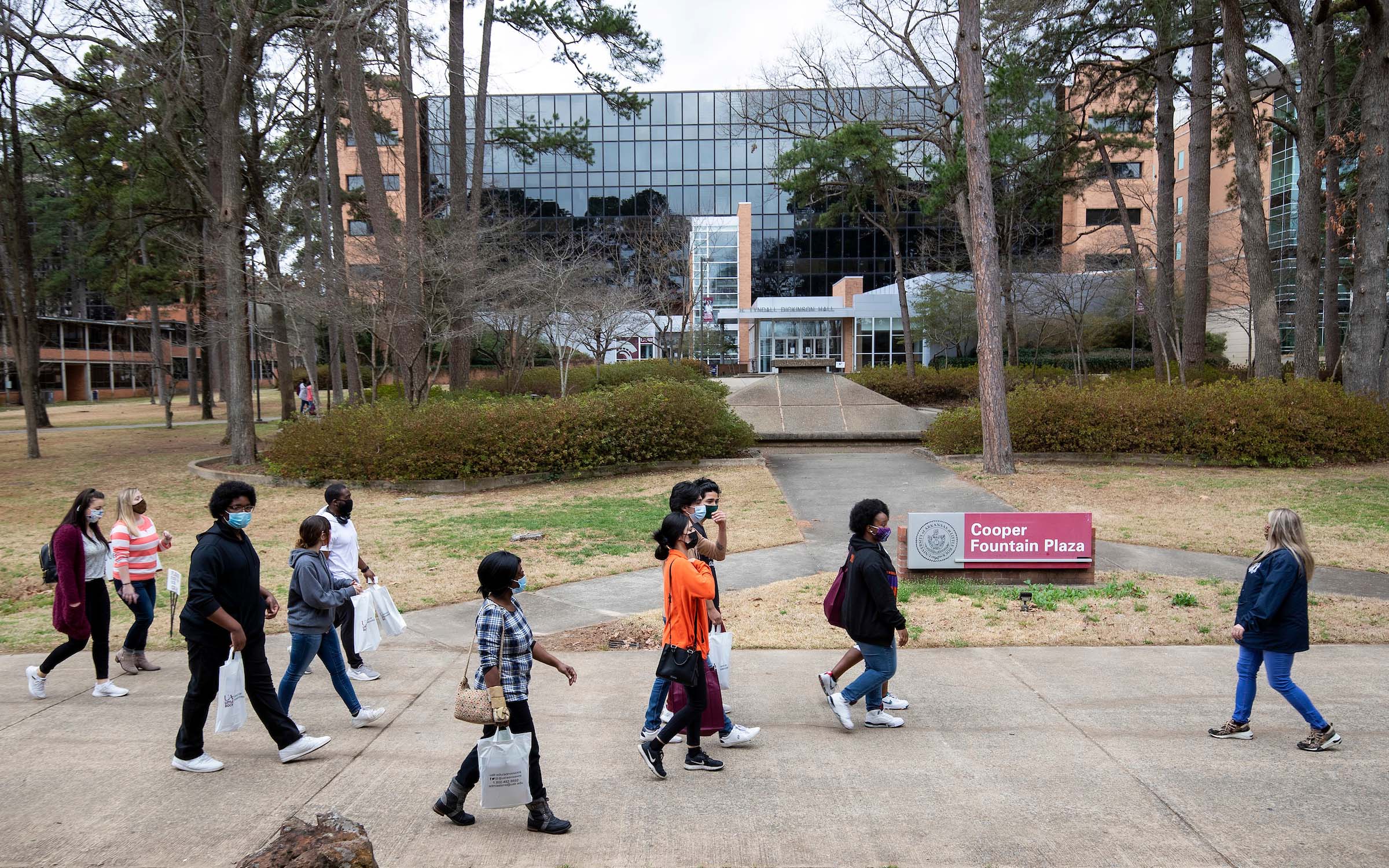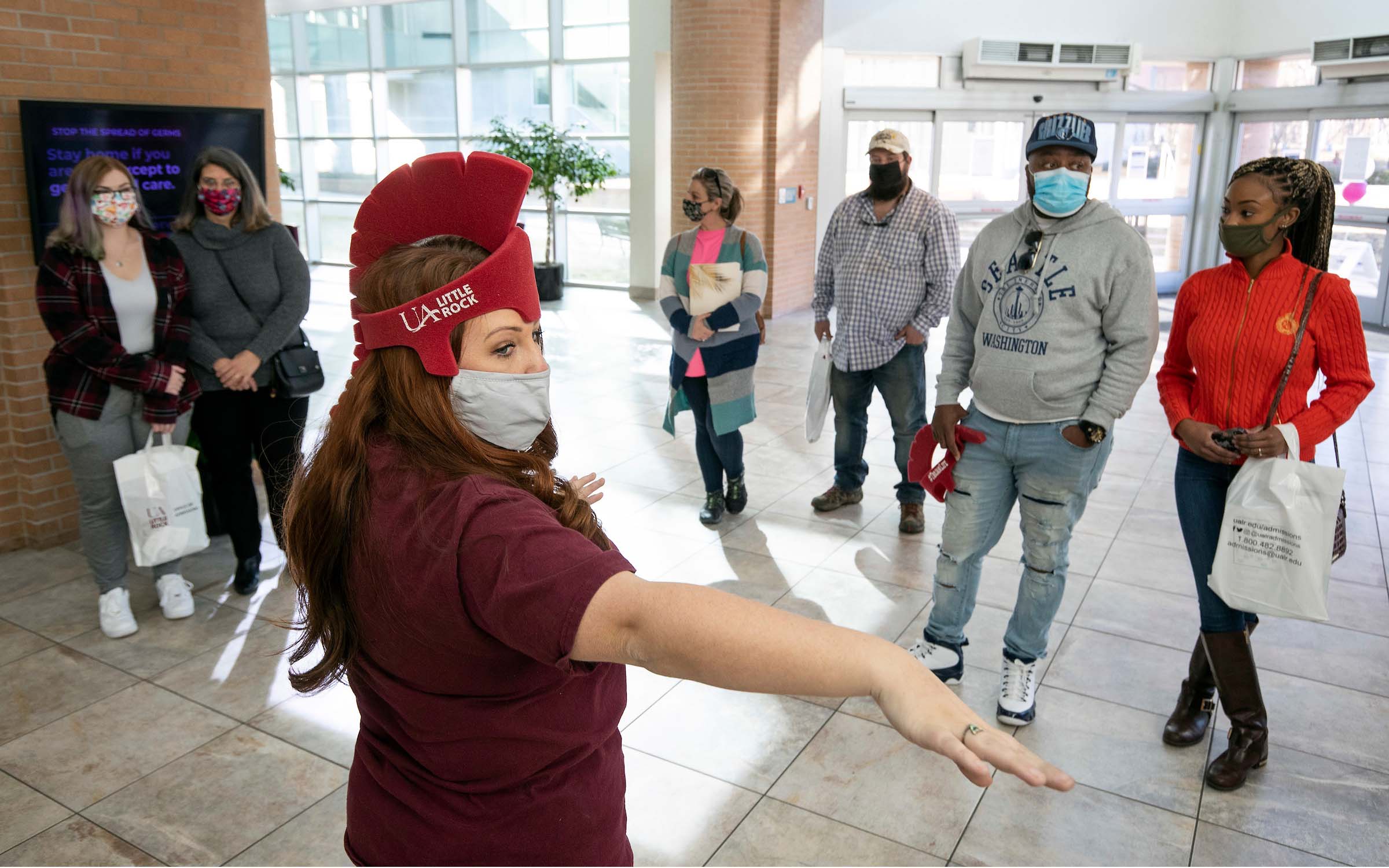COVID-19 pandemic brings college affordability challenges to the forefront
November 15-21, 2021
By Chloe McGehee
As a higher education destination, some students may have overlooked Arkansas in the past. However, Arkansas is one of the most affordable states to receive a degree among all 50 states, especially now that universities are providing bailouts due to the pandemic, according to state education officials.
Today, Arkansas is home to over 40 institutions of higher education, including 10 four-year universities, 22 two-year colleges, 12 private universities and one academic health center, according to the state Department of Education. The cost of attendance can include many expenses associated with attending college, including tuition and fees, meal plan and housing charges, books, supplies, and some miscellaneous expenses, such as a personal computer.
Nationally, a December 2020 report by the U.S. Government Accountability Office (GAO) shows that the COVID-19 pandemic has exacerbated college affordability and related issues. To help students overcome those challenges, many colleges in Arkansas prioritize affordability for students, giving them competitive tuition rates.
For example, the University of Arkansas at Little Rock is offering first-time freshmen as well as new freshmen with 11 or fewer transfer credit hours a scholarship that covers half of their tuition and fees for the 2021-22 academic year.
The scholarship is available to the first 1,000 students and is valued up to $5,000. It is funded through a combination of private and institutional funds. The scholarship is available to freshmen who are unconditionally admitted to UA Little Rock and enroll in at least 12 credit hours for the fall semester. No additional application is needed. Students who earn a 2.25 GPA or higher during the fall semester may renew the scholarship for the spring semester.
Before UA Little Rock had even instituted the half-off tuition for freshmen, attendance net cost had already gone down 11%, explained Cody Decker, UA Little Rock’s chief data office and vice chancellor for student affairs.
“It is an institutional priority for UA Little Rock to keep a higher education degree accessible for students. Chancellor (Christina) Drale and the leadership at UA Little Rock secured private funds as well as aligned institutional funds to make the maximum amount of scholarships (both merit and need-based) available for students,” Decker said. “The half-off tuition for new freshmen who enroll in fall 2022 is a new initiative that is unique to UA Little Rock. Students eligible for this scholarship will receive not only up to half off their course tuition and fees for their freshmen year, but their sophomore year as well.”
ADHE also supports institutions in the state making higher education affordable and easy, allowing for more in-state and out-of-state students to get degrees or certifications. With a lack of additional state appropriations before the pandemic, tuition and fees have risen by an average of 25% for four-year institutions and 32% for two-year institutions from fall 2009 to fall 2014, negatively impacting affordability, ADHE data shows.
“What we don’t want to do is disincentivize people from ever even going. The UALR model actually incentivizes students in a way that says, ‘we’re going to try to make it affordable for you,’” said Alisha Lewis, ADHE assistant director of operations. “I think that a lot of times we say we want students, we want to provide support for students. UALR put their money where their mouth is, they are actually putting some resources into investing in student success at an early, early level.”
Not only has UA Little Rock put their money where their mouth is, but so have other Arkansas institutions such as Philander Smith College in Little Rock and the University of Arkansas-Fayetteville In 2019, UAF started offering equivalent tuition prices to transfer students from community colleges within the University of Arkansas system. Philander Smith applied for and received grants to help current students, as well as forgiving the $80,000 worth of student debt from 2020/21 graduates.
ADHE’s goal is that these programs will encourage more students to receive higher education, whether it be a traditional four-year degree or not.
“Our goal is to create a robust economic Arkansas,” said Lewis. “My tagline says ‘college is for you.’ College isn’t just a four-year diversity. That’s a big part of the push that we have had for really the last couple of years and COVID has even intensified that. Students are sitting here trying to weigh out a lot of options when it comes to COVID concerns, when it comes to safety, when it comes to family concerns. When it comes to tuition and the college experience, they’re. having to really balance out a lot of options.”
The COVID-19 pandemic has also affected the decisions of high school seniors around the country, making it difficult for them to attend college in the first place. This is something Kindle Holderby, UA Little Rock’s assistant vice chancellor of enrollment management, recognizes and wants to counteract.
“I mean you would have to be blind to not see that it’s affecting everybody in the country,” Holderby said. “How do we address that? We want to make sure that we are setting up our classrooms via zoom and so people can attend in person or online at the same time. But then the lasting aspects of COVID, that’s where we attacked it. With the 50% off for affordability, and definitely I think no one really realized how much of an impact that it was going to have on costs and it happening during COVID is super beneficial. We didn’t want students to have to pick between attending college or helping provide for their families and so hopefully this helps address that they can do both.”
For undergraduate students, the average student loan debt per borrower at UA Little Rock is approximately $24,000. That figure is well below the national average of over $29,000 in loan debt, according to Decker. This is also below the average Arkansas debt, which lands at about $33,000.
“UA Little Rock has a comprehensive scholarship portfolio,” Decker explained. “Not only does UA Little Rock have an impressive scholarship offering for new freshmen, it offers several scholarships for new undergraduate transfer students. One of the distinguishing factors about UA Little Rock’s scholarship portfolio is that it is not only for traditional students but also non-traditional students who may, for example, take a year off after high school before starting college. Furthermore, merit scholarships prioritize high school cumulative GPA over traditional standardized test schools.
“UA Little Rock has also taken steps to make it easier for students to access institutional aid opportunities. In the last two years, UA Little Rock dropped the requirement that students fill out a separate application to receive an institutional scholarship. A student’s admission application is now used to match the student with the top institutional scholarship for which the student is eligible,” Decker continued. “Also, UA Little Rock has moved away from standardized tests as the determining factor when awarding scholarships to incoming students. As long as students receive a minimum score of 20 on the ACT and have at least a 3.0 high school grade point average (GPA), the student is eligible for institutional merit scholarships. The amount of their scholarship is now determined by their high school GPA. A higher GPA leads to a higher scholarship offer.”
All these aspects make it easier for students, traditional and non-traditional, to attend a higher education program, which is the ultimate goal of college affordability.
“It’s serious for families. As they prepare [for their lives], education opens so many wonderful doors and it is really a great opportunity for so many students,” Holderby said. “And we’ve been listening to our students and their families, and this is our reaction to that. We’re not just sitting back and saying, ‘we’ll figure it out. The cost is the cost.’ We are actively listening and then trying to engage with our community partners. We want a lot of people to know that this is an option for them.”
PHOTO CAPTIONS:
1./2. Land of Educational Opportunity: Arkansas colleges spotlight programs that prioritize affordability during pandemic
A December 2020 report by the U.S. Government Accountability Office (GAO) shows the COVID-19 pandemic has exacerbated college affordability. In Arkansas, UA Little Rock, Philander Smith and other colleges and universities are responding by offering tuition aid to needy students.
3. During fall admissions, UA Little Rock held Trojan DriveUp Day to help students and parents with enrollment and financial aid.





